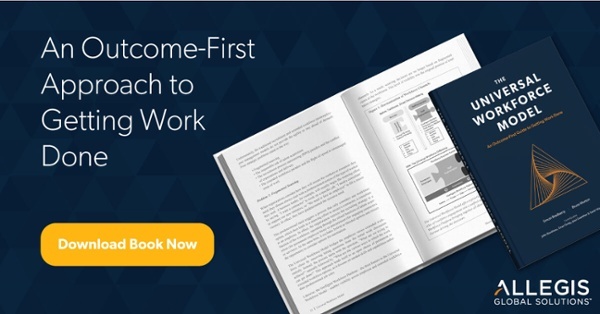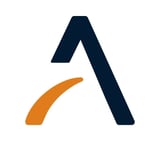Addressing 4 Common Workforce Challenges
When embarking on your workforce transformation journey there are myriad workforce challenges you may face. They can be strategy issues. Concerns over controlling costs. Or simply determining who is needed for the work and how to find them.
The Universal Workforce ModelTM addresses two types of workforce challenges shared by nearly every company today:
- Strategic challenges in determining how to secure resources at the right time and cost through permanent and extended workforce options (which we addressed in a recent blog article)
- Tactical challenges associated with skills shortages, demand for better use of data, evolving worker priorities and achieving higher standards for diversity, equity and inclusion (DEI)
These workforce challenges influence the success of the organization and of the individuals who struggle with everyday work demands. What follows is a closer look at the tactical challenges in the workplace and how the Universal Workforce Model addresses them.
Tactical Workforce Challenges of Current Models
For managers, directors and line-level practitioners, the broader “big picture” challenges of talent acquisition and extended workforce engagement are less important than the prevailing tactical workforce challenges they face daily. These tactical problems include four significant issues that will continue to evolve, including:
- Skills shortages and the need for agility in leveraging workers and resources
- Evolving workforce technologies and the inability to implement new innovations easily
- The advancement of data and analytics and the demand for better workforce intelligence
- Changing worker expectations and corporate goals, from DEI and sustainability to flexibility and the growing contingent workforce
Challenge 1: Skills Shortages and Workforce Agility
In a world where job vacancies routinely exceed the total number of active job seekers, it’s no surprise that companies have trouble finding people to get the work done – at least using traditional processes and methods. Moreover, the dynamics of a supply shortage are not likely to change. After all, many who left their current positions in the workforce during the COVID-19 pandemic did so permanently, either retiring or taking on new careers or life choices.
Given the shortage of workers, companies are refocusing traditional talent processes to create a more agile workforce transformation strategy. They are doing so by rethinking the barriers that limit talent acquisition and extended workforce engagement today.
Those divisions begin with the predetermined direction of using a permanent employee versus a contractor. As mentioned, the Universal Workforce Model draws from both sides of the employee/flexible worker universe to arrive at the ideal direction.
Likewise, the approach breaks the limitations of traditional job roles by opening work through a task-driven model. Overall, the work can be divided, allocated and resourced through the best means possible, a fluid approach that creates the agility to achieve optimal results in the face of continued workforce scarcity.
Challenge 2: Implementing Workforce Technologies
The world of workforce technology is fast-moving, crowded and complex. As an example, the latest report from research and advisory firm Talent Tech Labs offers a snapshot of the pace of change. The Talent Acquisition Ecosystem 11 report reveals 42 separate categories of talent technology serviced by hundreds of providers.
What chance do you have of staying on top of this rapidly moving landscape? How do you gain consensus on the right ecosystem for your organization, securing budget, navigating internal IT resources and prioritizing against competing projects? How do you execute this before your planned ecosystem is obsolete?
In our experience, there is often a chasm between the promise of workforce technologies and the operational reality. The Universal Workforce Model addresses this challenge with a gateway approach that results in a simplified technology ecosystem centered around an Intelligent Workforce Platform.
Challenge 3: Incorporating Data and Analytics
Organizations are awash in a sea of workforce data, which raises the stakes for improving workforce intelligence. Workforce stakeholders must make informed decisions about everything from pay rates to worker types, locations and performance measurements. The challenge for any manager or director is that data alone does not translate to good decisions. For accurate intelligence, context and analysis are vital – and that requires a holistic view of all data across the numerous disparate channels and systems where it resides.
The Universal Workforce Model has one point of integration that brings all data into a virtual environment, empowered by a machine learning function that adapts that information for analysis in a common framework. As a result, the technology platform delivers intelligence based on both internal and external data, draws analysis based on that information, and enables the informed decisions that business leaders seek.
Challenge 4: Changing Workforce Expectations and Policy Goals
In addition to a changing marketplace and technology landscape, workforce decision-makers must contend with evolving priorities every day. These priorities come from consumers, customers and workers themselves, changing expectations based on business and the markets, as well as new regulatory issues and a focus on new workforce demands coming out of the pandemic, ranging from privacy and vaccinations to health and safety, to name a few.
Most notable are priorities around boosting DEI; supporting sustainability; improving workforce flexibility; and leveraging a growing contingent workforce. Companies are embracing new levels of commitment to these goals, and HR, procurement and business leaders must make substantial efforts to meet them.
These goals are best supported by a workforce infrastructure that: 1) makes workforce decisions that are flexible and transparent, and 2) captures any information that tracks and highlights progress or challenges in meeting those goals. The Universal Workforce Model provides a decision-making ecosystem that addresses both needs.
For example, the Workforce Business Partner can track diversity in hires, retention or success of diverse candidates, or the performance of both contingent workers and employees through one source. Likewise, a task-based, barrier-free approach lets organizations better engage workers regardless of location or work arrangement (permanent employee or flexible worker).
Strategic Versus Tactical Is No Longer an Either/Or Question
The application of an approach to both strategic and tactical issues is often a stumbling block to legacy workforce transformation strategy efforts. In the past, the shortcomings of focusing on near-term issues were not felt for a meaningful amount of time. In other words, a tactical approach that did not change easily still delivered value for one, two or even up to three years. Today, change often comes too quickly to rely on a near-term solution.
Likewise, the business does not have the patience to wait for a long-term vision to solve pressing problems. That means a solution must deliver wins today. The Universal Workforce Model provides the flexibility to address both, offering near-term solutions and long-term value in a practical approach for everyone involved. It’s a journey that will be required for any successful organization to navigate the rapidly evolving future of work and the workforce.
How Can the Universal Workforce Model Help You Solve Tactical Workforce Challenges?
We hope this article outlines how the Universal Workforce Model can help you navigate tactical workforce challenges associated with skills shortages, demand for better use of data, evolving worker priorities and achieving higher standards for DEI. Download the Universal Workforce Model book to learn more about workforce transformation strategies and ways to rethink how work gets done.
**Editor’s Note: This article was adapted from “The Universal Workforce Model: An Outcome First Guide to Getting Work Done.”
-min.png)





